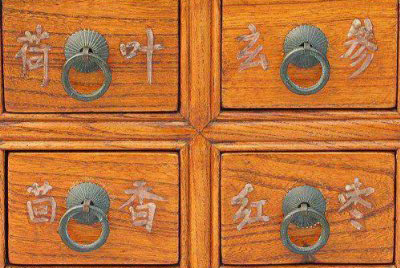| |
 
Chinese physicians used several different methods to classify traditional Chinese herbs:
The Four Natures (四氣 or 四性)
The Five Tastes (五味)
The Meridians (歸經)
The earlier (Han through Tang eras) Ben Cao (Materia Medicae) began with a three-level categorization:
Low level -- drastic acting, toxic substances;
Middle level -- medicinal physiological effects;
High level -- health and spirit enhancement
During the neo-Confucian Song-Jin-Yuan era (10th to 12th Centuries), the theoretical framework from acupuncture theory (which was rooted in Confucian Han theory) was formally applied to herbal categorization (which was earlier more the domain of Daoist natural science). In particular, alignment with the Five Phases (Tastes) and the 12 channels (Meridians theory) came to be used after this period.
The Four Natures
This pertains to the degree of yin and yang, ranging from cold (extreme yin), cool, neutral to warm and hot (extreme yang). The patient's internal balance of yin and yang is taken into account when the herbs are selected. For example, medicinal herbs of "hot", yang nature are used when the person is suffering from internal cold that requires to be purged, or when the patient has a general cold constituency. Sometimes an ingredient is added to offset the extreme effect of one herb.
The Five Tastes
The five tastes are pungent, sweet, sour, bitter and salty, each of which their functions and characteristics. For example, pungent herbs are used to generate sweat and to direct and vitalize qi and the blood. Sweet-tasting herbs often tonify or harmonize bodily systems. Some sweet-tasting herbs also exhibit a bland taste, which helps drain dampness through diuresis. Sour taste most often is astringent or consolidates, while bitter taste dispels heat, purges the bowels and get rid of dampness by drying them out. Salty tastes soften hard masses as well as purge and open the bowels.
|